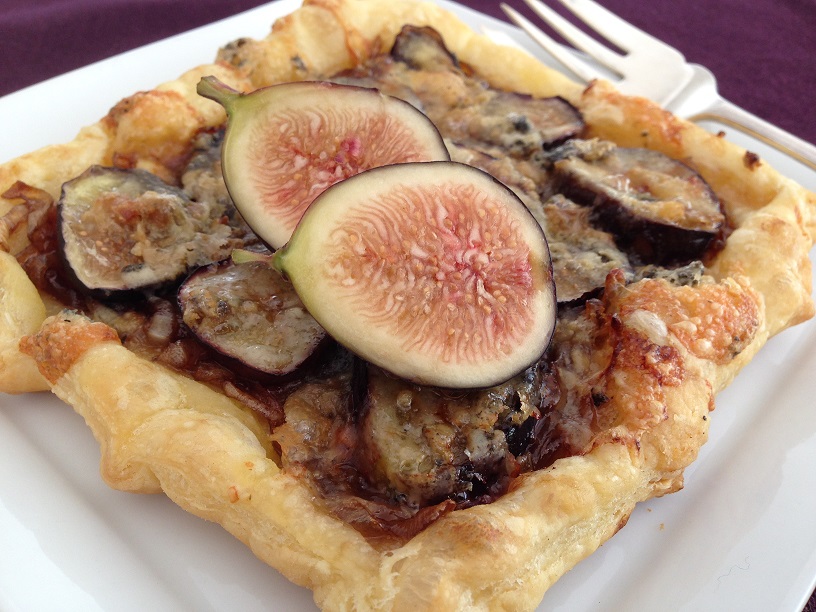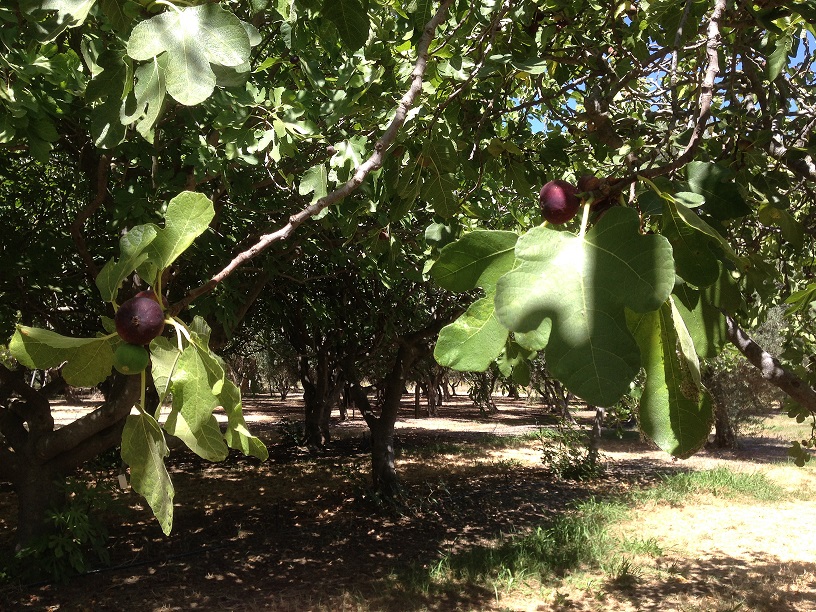A Tour of a Genetic Library and a Taste of Figs
 Monday, September 15, 2014 at 4:00AM
Monday, September 15, 2014 at 4:00AM 
By Sandy Hu
The latest from Inside Special Fork
Many of us finally “got” the importance of plant diversity when we tasted our first heirloom tomatoes. Instead of the rock-hard, perfectly shaped and beguilingly red but tasteless supermarket variety, we were shocked to encounter an astounding array of colors and flavors.
These heirlooms came in a multitude of hues – yellow, green, purple, pink, orange, burgundy. Some were big and others were small, some were striped; most were misshapen. They boasted a range of tastes from sweet to tart. We experienced such variety that defied a single description of what a tomato should look like or taste like.
Those tomatoes were in danger of extinction until chefs took up their cause, farmers’ markets became fashionable and supermarkets caught the heirloom trend.
That’s one reason to preserve plant varieties – so we can enjoy those anomalies that don’t fit the agribusiness model. Another is to have as many types as possible – the widest palette – to breed new varieties of fruits or vegetables for the best characteristics. More important is to prepare for a time when some varieties might not survive climate change, disease or other catastrophic environmental conditions and whole crops could be wiped out. And finally, there’s simply the fact that it seems a crime against nature to cause the extinction of any existing plant.
So it’s heartening to tour the USDA National Clonal Germplasm Repository’s Wolfskill Experimental Orchards in Winters, California, as I did last month on a private tour for members of Les Dames d’Escoffier International’s San Francisco Chapter.
Not open to the public, this U.S. Department of Agriculture facility, on just over 74 acres, is a library that houses genetic copies of plants from all over the world, some dating back over a hundred years. This facility maintains the genetics as plants, not as seeds.
We were led through the fields by Dr. John Preece, Supervisory Research Leader/Horticulturist,  National Clonal Germplasm Repository, Davis. “It’s like walking through the whole Mediterranean world,” said Dr. Preece, as he led us through the orchards.
National Clonal Germplasm Repository, Davis. “It’s like walking through the whole Mediterranean world,” said Dr. Preece, as he led us through the orchards.
“Natural habitats are being lost,” Dr. Preece explained. “And we can’t preserve these plants in situ (in their original place).” As natural habitats give way to the construction of cities and dams, the existing plants are destroyed. “The most valuable part of our orchard is the wild forms of fruit and nut crops that we curate,” he said.
The facility maintains breeders’ lines. Plant breeders, working to develop better strains – for example, disease-resistant or drought-tolerant versions of an existing fruit or nut – can find a wide variety of plants to select from to breed into a new plant. Because the facility is government owned, dormant sticks of the plants are freely distributed to breeders and others.
Dr. Preece noted that unlike GMOs, where the genes of one organism are transferred into another, plant breeding is traditional breeding that crosses plants with other plants; a practice that has gone on for 10,000 years.
Driving through orchards of almonds, walnuts, peaches, plums, grapes and more, we stopped at the fig grove, home to 500 fig trees representing more than 200 varieties of figs. Let loose in the groves, we were free to pluck and taste any fig from any tree – and to marvel at the range of shapes, colors and flavors.
The field tour was followed by a fig luncheon at Preserve Public House in Winters.
Fig season is now through October, so, inspired by our orchard tour, here’s a fig recipe I made. It was adapted from a recipe from California Figs, and a version of the recipe was served in Austin last year at the Les Dames d’Escoffier International conference by Kerrygold, my former PR client, to showcase Cashel Blue cheese from Ireland.
Caramelized Onion, Fig and Blue Cheese Tartlets
1 frozen puff pastry sheet (1/2 of a 17.3-ounce package)
1 tablespoon olive oil
2 cups thinly sliced onion
1 tablespoon butter
2 tablespoons brown sugar
1 tablespoon Balsamic vinegar
8 fresh California figs, sliced vertically
4 ounces blue cheese (such as Cashel Blue), crumbled
- Thaw pastry sheet at room temperature 40 minutes or until easy to handle.
- While pastry sheet is thawing, make the filling: In heavy skillet over low heat, heat oil and sauté onion, cooking gently for 10 minutes or until very soft. Add butter, brown sugar and balsamic vinegar; continue to cook over low heat, stirring frequently, about 20 minutes until onions are very soft, caramelized and jam-like. Cool.
- Preheat oven to 375°F. Unfold pastry sheet on lightly floured surface. Remove parchment paper. Roll out pastry sheet into a 12- X 12-inch square. With sharp knife, cut sheet into quarters to make four 6- X 6-inch squares.
- Divide onion mixture among squares, leaving a ½-inch margin. Fold the margin up at right
 angles to the base, pinching each corner of the square to secure. Crimp edges in a few places along the sides to keep the margin from collapsing.
angles to the base, pinching each corner of the square to secure. Crimp edges in a few places along the sides to keep the margin from collapsing. - Top each square with sliced figs and crumbled blue cheese. Transfer to baking sheet. Bake about 15 minutes until golden and crisp.
Serves 4. Recipe adapted from California Figs.
Tips:
- Garnish each serving with halved fresh figs.
- For a party appetizer, instead of cutting four squares, keep the pastry sheet whole. Prick all over with a fork and top with filling. After baking, cut into small rectangles with a sharp knife.
- Substitute goat cheese for the blue cheese.
Special Fork is a recipe website for your smartphone and PC that solves the daily dinnertime dilemma: what to cook now! Check out our recipe database for quick ideas that take no more than 30 minutes of prep time. Follow us on Facebook , Twitter, Pinterest, and YouTube.
Reader Comments